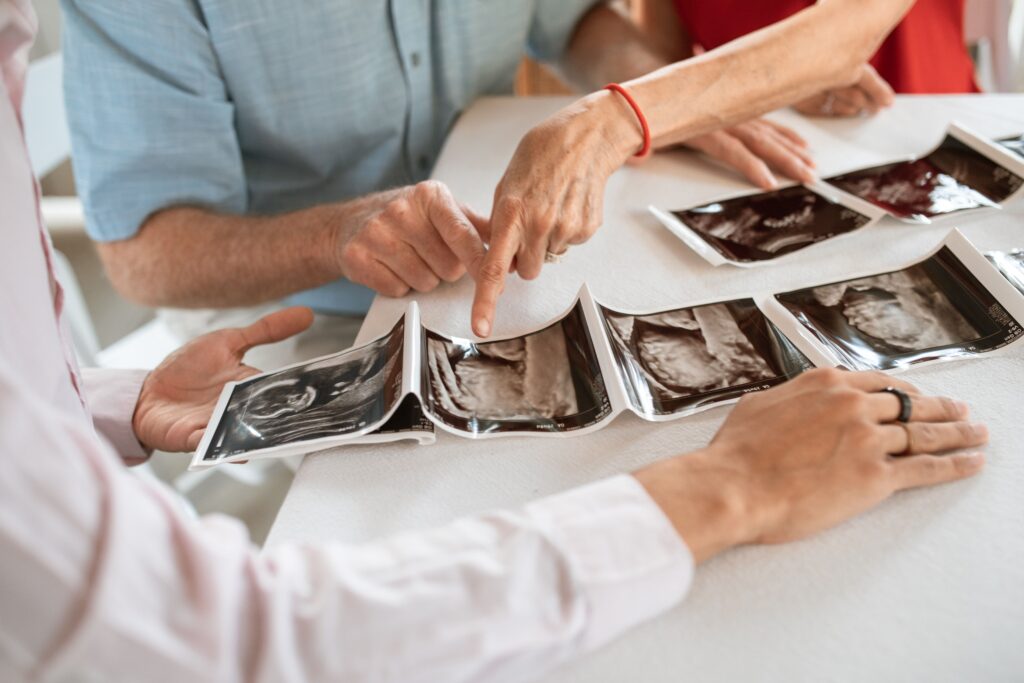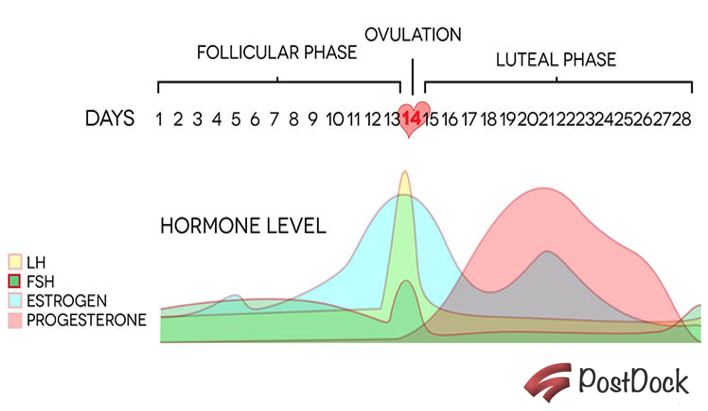Fertile Window
The Fertile Window is the period in a woman’s menstrual cycle when she is most likely to become pregnant. It is a window of opportunity that opens up around ovulation when your body releases an egg. This window lasts for about 12 days; during this window, you can get pregnant with a high chance of success.
During the Fertile Window, your pregnancy chances increase by 10% to 50%. It can be difficult to predict when your fertile window will open, but knowing that it begins at least once each month can be helpful.
Researchers first introduced the concept of the fertile window to study how pregnancy occurs. However, this concept has been applied in many other fields, such as sports and business.
The fertile window is important because it gives women a chance to conceive while most likely to succeed. The best time for conception is within the first day of ovulation, which can be detected through a blood test, an ultrasound scan, or by keeping a record of your menstrual session. However, several other factors also play a key role in getting pregnant naturally.
When are you more likely to conceive?
Women who want to get pregnant often have a window of fertility that lasts two weeks. This window is called the fertile window.
It is often hard for women to know when their fertile window is, leading to many problems in pregnancy. With the release of a new device, it will be easier for women to know when they are most likely to conceive.
The Fertile Window device will be able to detect ovulation, which happens during the woman’s fertile window, and then provide an alert when it happens. This can help women plan their families and avoid getting pregnant while not ready yet.
Why is it Important to know the fertile window?
The fertile window is the period in which a woman can conceive. It is about three weeks before and after ovulation.
The two benefits of having a fertile window are:
1) – Women have the best chance of conceiving while most fertile.
2) – Women can get pregnant faster when they have their fertile window, especially if they want to get pregnant quickly.
The Fertile Window is the time frame that your body is in a while trying to conceive. It’s a time frame that has been studied for decades, and it’s true whether you are trying to get pregnant or not.

The best method of keeping track of your fertile window
Fertilization is the process of a female animal’s release of a fertilized egg into the uterus. In humans, this process starts around day 14 and ends around day 28. Therefore, it is important to understand your fertile window to have a successful pregnancy.
You can track your fertile window, but one of the most accurate methods is using an ovulation kit. These kits contain a stick that you insert in your vagina before bed. It will detect when you release an egg and give you information on how long it takes for the egg to travel through your body and whether or not it has been fertilized by sperm.
You can use an app like Clue or Glow to understand better how your body works and what days are the best for conception. You should also talk with your doctor about any potential health issues so that they can be avoided if possible.
Pregnancy Hormones functions
Four key hormones play a key role in pregnancy:
1)- LH hormone
It is a hormone released by the pituitary gland. It helps to regulate the reproductive system and the menstrual cycle. This hormone is released when a woman ovulates, affecting the release of estrogen and progesterone. It also plays an important role in fertility and sexual health.
The LH hormone is also known as luteinizing hormone (LH) because it causes ovulation in women after releasing eggs from their ovaries.
2)- FSH Hormone
It is a hormone produced by the pituitary gland. It is also known as the luteinizing hormone. This hormone helps develop gonads, ovaries, and testes in humans.
In pregnancy, FSH levels are tested to determine whether the fetus has sufficient hormone levels. It can cause congenital abnormalities such as cleft lip, palate, and Down syndrome if it does not have adequate levels.
3)- Estrogen Hormone
It is the most important hormone for a woman during pregnancy. It helps to maintain the health of a woman and the baby.
A study published in the Journal of Obstetrics and Gynecology found that approximately 1 in 10 pregnant women had estrogen hormone levels of 150 pmol/L or more. This result is consistent with studies showing that 1 in 5 pregnant women have estrogen hormone levels greater than 100 pmol/L.
Estrogen hormone levels are slightly higher during pregnancy than at other times in a woman’s life due to the increase in blood volume needed for growth and development during pregnancy.
4)- Progesterone Hormone
It is a hormone that is produced in the ovaries and placenta. It is responsible for changes in the body during pregnancy.
Progesterone causes changes in the uterus that prepare it for a fertilized egg. It also causes changes in the breasts to produce milk and changes in the brain to help with memory and sleep. In addition, there are some common symptoms of pregnancy, which you can also notice.
Let’s examine their levels and link them with a fertile window to understand the concept in technical terms.
Phases of Menstrual Cycle – The Simple way to understand
The menstrual cycle is a natural part of the reproductive process. It lasts for about 28 days, occurring in the female reproductive system. The menstrual cycle is regulated by hormones released from the ovaries in a cyclical pattern.
Some indicators that your period has ended include spotting, bleeding that lasts more than seven days, cramps that last more than seven days, and pain with urination.
The length of your period can be affected by other factors like weight changes, pregnancy, or hormone therapy.
Women need to know when their menstrual cycle will start to plan accordingly.
A)- The follicular phase of a menstrual cycle starts on the first day of your period, the day you get your period. It lasts from 1-14 days; during this time, a woman will have an average of 4-6 days without menstruating.
B)- Ovulation: Ovulation occurs when the follicle on the ovary starts to release an egg fertilized by sperm. This process occurs once every month during the menstrual cycle.
C)- The luteal phase of a menstrual cycle starts on the 15th day after you get your period and lasts until ovulation, around 14-16 days after starting your next period. The luteal phase is the second half of the menstrual cycle, which lasts from ovulation until menstruation. It is a time when the body prepares for pregnancy.

On average, a woman menstruates every 28 days, with her first cycle being between 21-35 days long and her last lasting between 35-45 days.
Conclusion
You may wonder how soon it is too soon to have a baby? The answer to that question is different for everyone. It’s important to know your body because each person’s body reacts differently to the same health and lifestyle factors.
The best time to have a baby is when you are physically, mentally, and emotionally ready. So it’s important to consider your age, health, finances, and lifestyle.
You can track your fertile window, but one of the most accurate methods is using an ovulation kit. These kits contain a stick that you insert in your vagina before bed. It will detect when you release an egg and give you information on how long it takes for the egg to travel through your body and whether or not it has been fertilized by sperm.
Parents had to rely on friends and neighbors for information about their children in the past. However, many apps can help parents track their children’s location and activities.
Parents can use these apps to ensure their children are safe and sound. They also have a chance to talk with them over video chat if they need to let them know what is happening in their lives.
FAQs
1- How to know when you’re ovulating?
The most common way to track your ovulation is through basal body temperature (BBT). You can use an app on your phone or an online tool like Ovulation Tracker to help you keep track of changes in BBT over time.
– Rise in basal body temperature, typically 1/2 to 1 degree, measured by a thermometer
– Higher levels of luteinizing hormone (LH) were measured on a home ovulation kit.
– Cervical mucus, or vaginal discharge, may appear clearer, thinner, and stretchy, like raw egg whites.
– Breast tenderness
– Bloating
– Light spotting
– Slight pain or cramping in your side
2- How Often Should I Track My Follicle Counts and Estrogen Levels?
Many people are curious about how often they should follow their estrogen levels and follicle counts. This article discusses the factors influencing women’s estrogen levels and follicle growth.
Facinfluencinguence estrogen levels in women include age, menstrual cycle, pregnancy, breastfeeding, menopause, and hormone replacement therapy (HRT). Factors that influence follicle growth in women include age, menstrual cycle, pregnancy, breastfeeding, etc.
3- What are the Signs of My Follicular Phase Ending?
One of the signs of your follicular phase ending is when you notice that your hair is getting thinner and thinner.
Signs of my follicular phase ending include:
– The hair on your head seems to be getting thinner.
– There are fewer hairs in the shower after washing.
– You might also notice a change in your scalp’s texture, which might be dryer and flakier.
4- How to Track Your Ovulation in a Typical Ovarian Cycle
The typical ovarian cycle consists of follicular, ovulation, and luteal phases. The pituitary gland secretes Follicle-stimulating hormone (FSH) during the follicular phase, followed by ovulation. Finally, the corpus luteum secretes progesterone during the luteal phase.
5- How to Determine Your Luteal Phases Length
The luteal phase length is important to consider when trying to conceive. The size of the luteal stage is determined by a woman’s menstrual cycle and can vary from woman to woman.
Luteal phase lengths can vary depending on your age, the time of ovulation, and how many days you ovulate. Women have a shorter luteal phase than men, but exceptions exist.
6- How to Stop Ovulating on Pills
A pill is a form of hormonal birth control that prevents ovulation in the female body. It contains synthetic versions of hormones such as estrogen and progesterone that help to suppress ovulation.
There are two ways to stop ovulating on pills:
1) Taking the pill continuously for at least three months is the most effective method.
2) Skipping your period for at least three months is not recommended because it can lead to irregular periods and other health risks.
7- When Does Ovulation Happen, and what are estradiol levels in urine tests?
Estrogen levels in the urine are among the most popular determining when a woman is fertile. There are two main types of estrogen – estradiol and estrone. Estradiol is the predominant estrogen in the pre-ovulatory fluid, and it peaks about 24 hours before ovulation.
This hormone level drops the following ovulation significantly, so it can be difficult to determine when you have stopped being fertile. However, other methods, such as basal body temperature, cervical mucus, and ultrasound, may help predict ovulation more accurately than urine tests.
Related Posts:
3)- Best Time for 3D Ultrasound
4)- How Long After Unprotected Sex Pregnancy Test
5)- What does BFP mean in pregnancy?
6)- How to Read a Clearblue Pregnancy Test
7)- When Does Milk Start Leaking During Pregnancy
9)- How to Use a Pregnancy Pillow
10)- How Soon Can a Doctor Detect Pregnancy By Pelvic Exam




